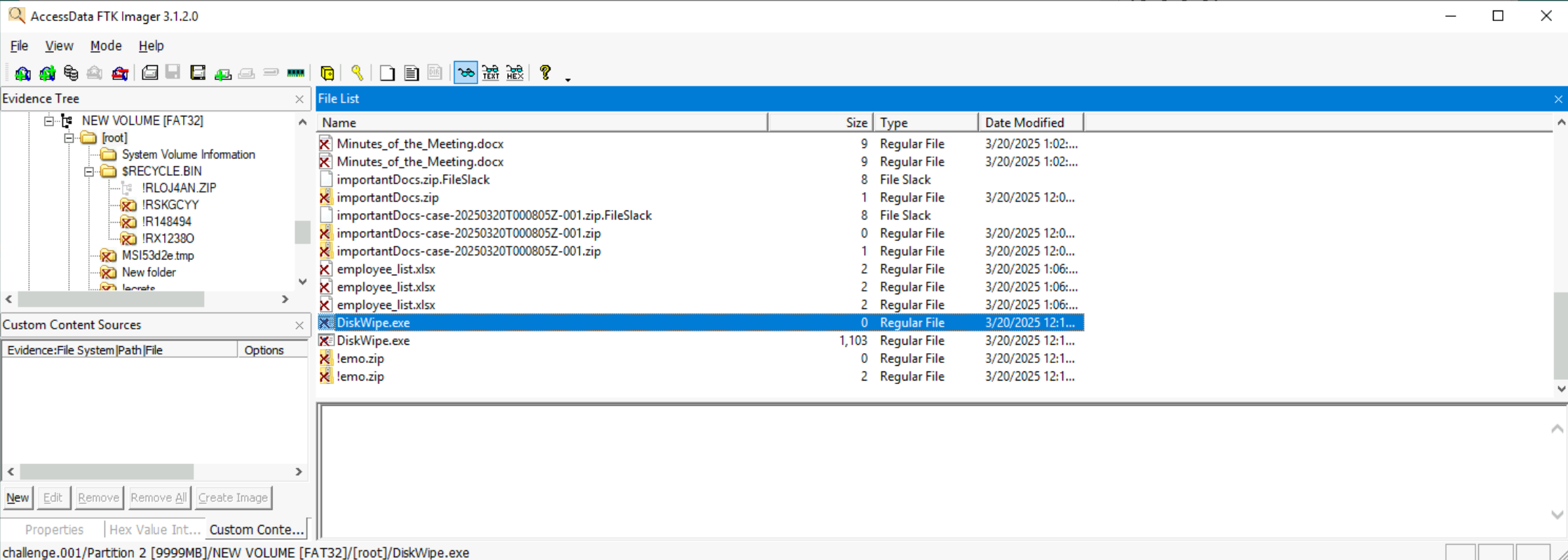THM: Diskrupt
Digital forensics to recover deleted files
Diskrupt
THM Walkthrough
Forensic Investigation of a Disk Image
Main Tools
The main tools used in this room:
- HxD
- FTK Imager
- MFTExplorer
- CyberChef
Background
The TryHackMe Diskrupt challenge involves a forensic investigation of a disk image. The scenario presented is that an employee is suspected of exfiltrating proprietary info and attempting to erase traces of their actions. The forensics team has taken an image of the suspect’s disk, but due to an unexpected system failure, fragments of critical evidence were left behind on the workstation and external devices.
The forensics lab has provided a forensic image of the hard drive. The expectations are to:
- Fix the damaged disk
- Examine the partitions
- Find evidence of access to sensitive documents
- Determine if any files were deleted or tampered with
- Discover all hidden files on the disk
- Carve out important files deleted from the disk
Steps Taken
- FTK Imager: Perform an initial inspection by opening the provided forensic image
challenge.001using FTK Imager. When first opened, we are presented with an “Unrecognized file system”. The data structure of the disk image appears to match an MBR, however, the two bytes at the end of the 512 KB block (i.e. the magic number) are0xACBD- not0x55AAas expected.
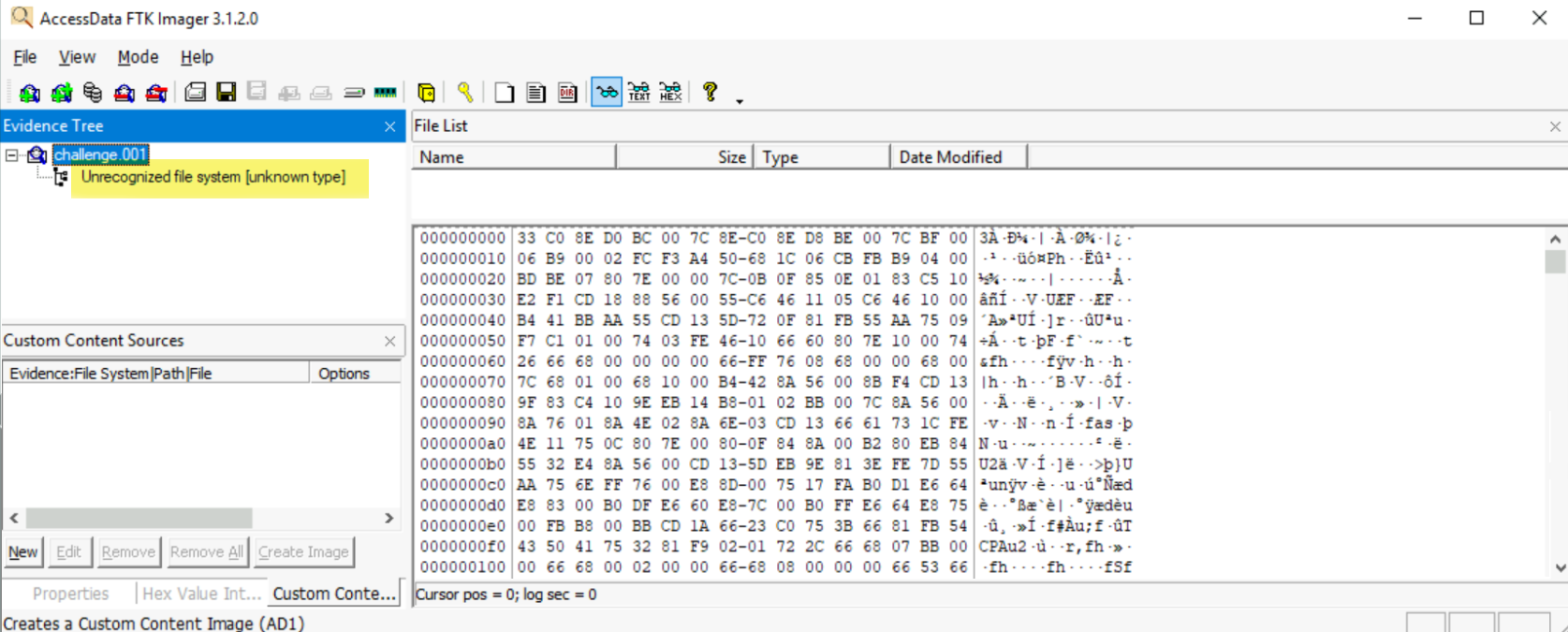
Question: What are the corrupted bytes in the boot sector that caused the disk to be damaged?
Answer:
AC BD

- HxD: Next, we want to repair the image by changing the corrupted bytes. To do this, we will open the image in HxD so that we can change the signature to
55 AA, which will make the code block recognizable as MBR.- Edit
0xACBDto MBR’s magic number0x55AA(highlighted in blue on image below). - Next, review the 16 byte entries for each partition. In the image below, Partition 1 is highlighted in orange and Partition 2 in red. The byte in position 4 (of 0-15) identifies each Partition’s file system. Partition 1’s file system is ID’d as NTFS (
07), and Partition 2 is ID’d as FAT32 (0C). The bytes in position 12-15 are the number of sectors for the partition.
- Edit
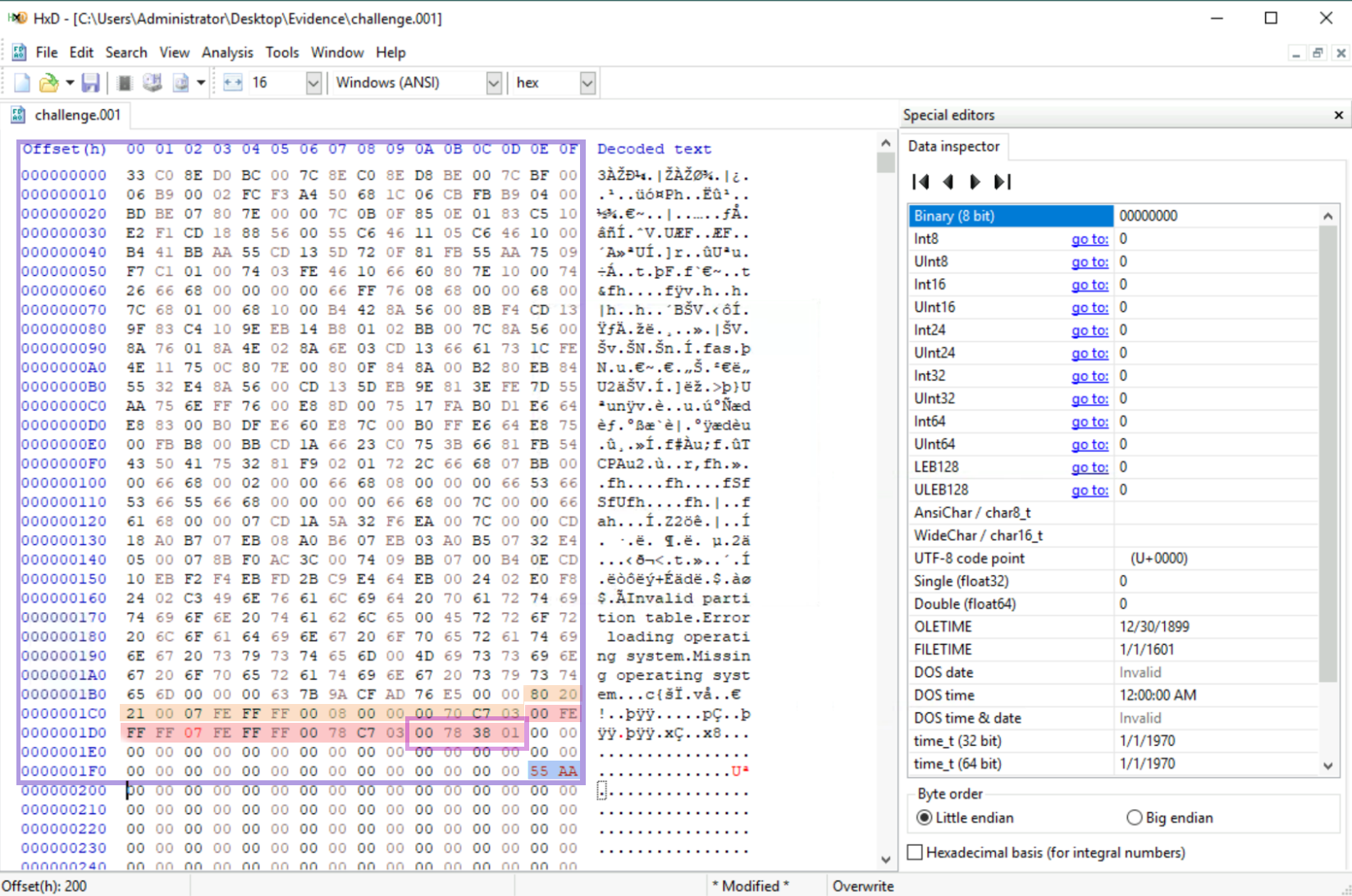
Question: What are the bytes representing the total sector of Partition 2 in little-endian?
Find the last four bytes of Partition 2 (in the purple box in the image above) and convert these to little-endian. The bytes are:
00 78 38 01and converted to little-endian:Answer:
0x01387800
Question: What is the size in GB of Partition 1?
Highlight the last four bytes of Partition 1, then refer to the “Data inspector- Int32” =
63401984. This is the number of sectors given to Partition 1. Multiply this number by 512 bytes/Sector, then divide by 1024**3 bytes/GB to get:Answer:
30.23 GB

Question: What is the size in GB of Partition 2?
Similar to the previous question, highlight the last four bytes of Partition 2, then refer to the “Data inspector- Int32” =
20477952. Multiply this number by 512 bytes/Sector, then divide by 1024**3 bytes/GB to get:Answer:
9.76 GB
- FTK Imager: Re-open the newly edited
challenge.001. The image is now recognized.- Got to the “Evidence Tree” on the left, then open Partition 1 –> NONAME (NFTS) –> [root]. On the right, highlight and download
$MFTfrom the “File List”. - Similarly, repeat for Partition 1 –> NONAME (NFTS) –> [root] –> $Extend –> $RmMetaData and find and download
$J.
- Got to the “Evidence Tree” on the left, then open Partition 1 –> NONAME (NFTS) –> [root]. On the right, highlight and download

- MFTECmd.exe: From the command line prompt, analyze the file using MFTE which creates a CSV file:
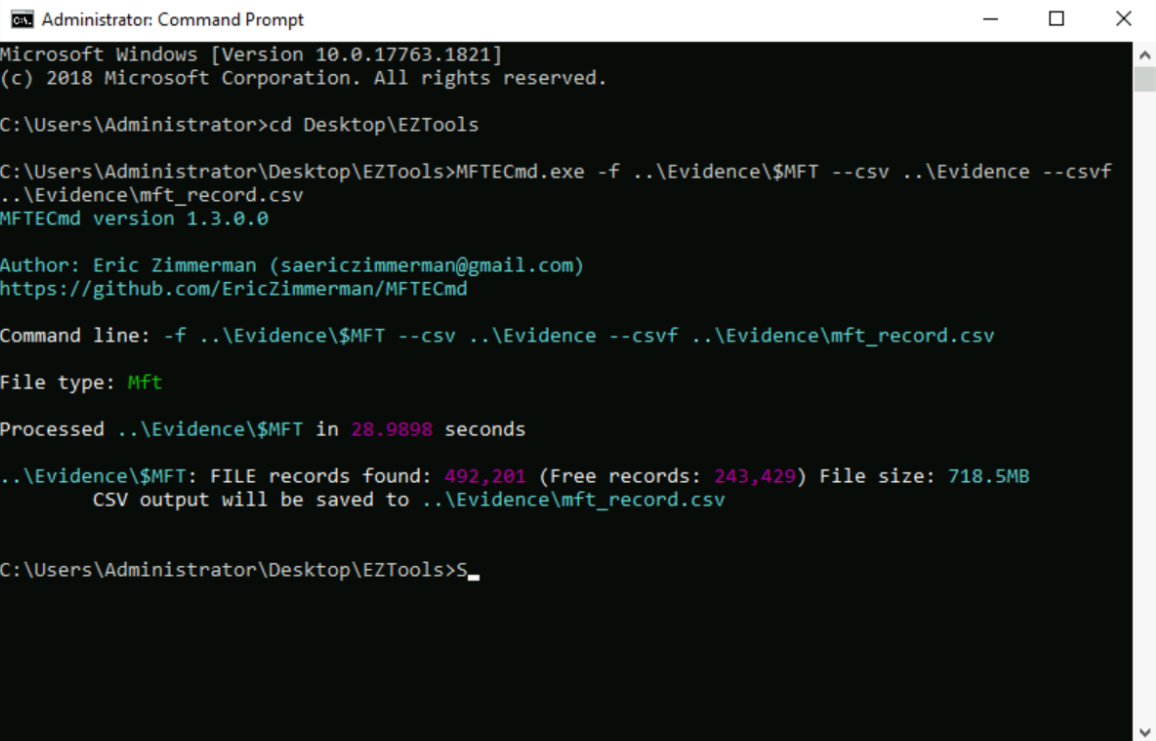
- Timeline Explorer: When complete, open both CSV files using native Timeline Explorer.
Question: In the NFTS partition, when was the text file related to the password created on the system?
Search for “passwords” in the
MFT_record.csvfile using Timeline Explorer. Selectpasswords.txtand locate the column “Update Timestamp”:Answer:
2025-03-19 22:01:57
Question: What is the full name of the sensitive PDF document accessed on this disk?
Search for “.pdf” in the
J_record.csvfile. Notice there is a ‘sensitive’ PDF:Answer:
Quantum-Resistant Cryptographic Algorithms.pdf
Question: When was this file first found on the disk?
The answer is given in the “Update Timestamp” column:
Answer:
2025-03-20 00:44:37
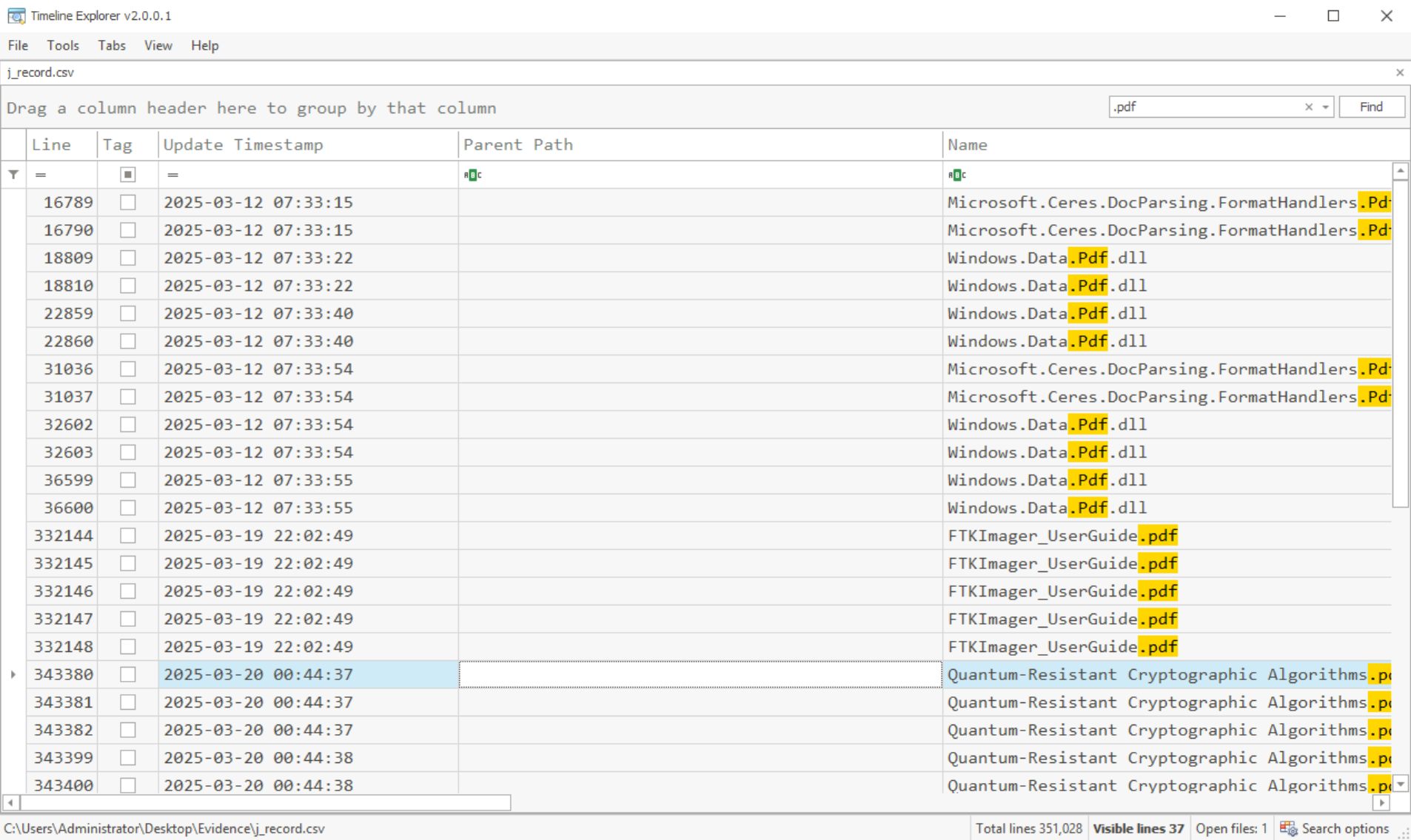
Question: What is the entry number of the directory in the Journal that was created and then deleted for exfiltration purposes on the disk?
Search the
J_record.csvfor the termexfil. The “Name”data exfilappears in the search results. In the column “Entry Number”:Answer:
163896.
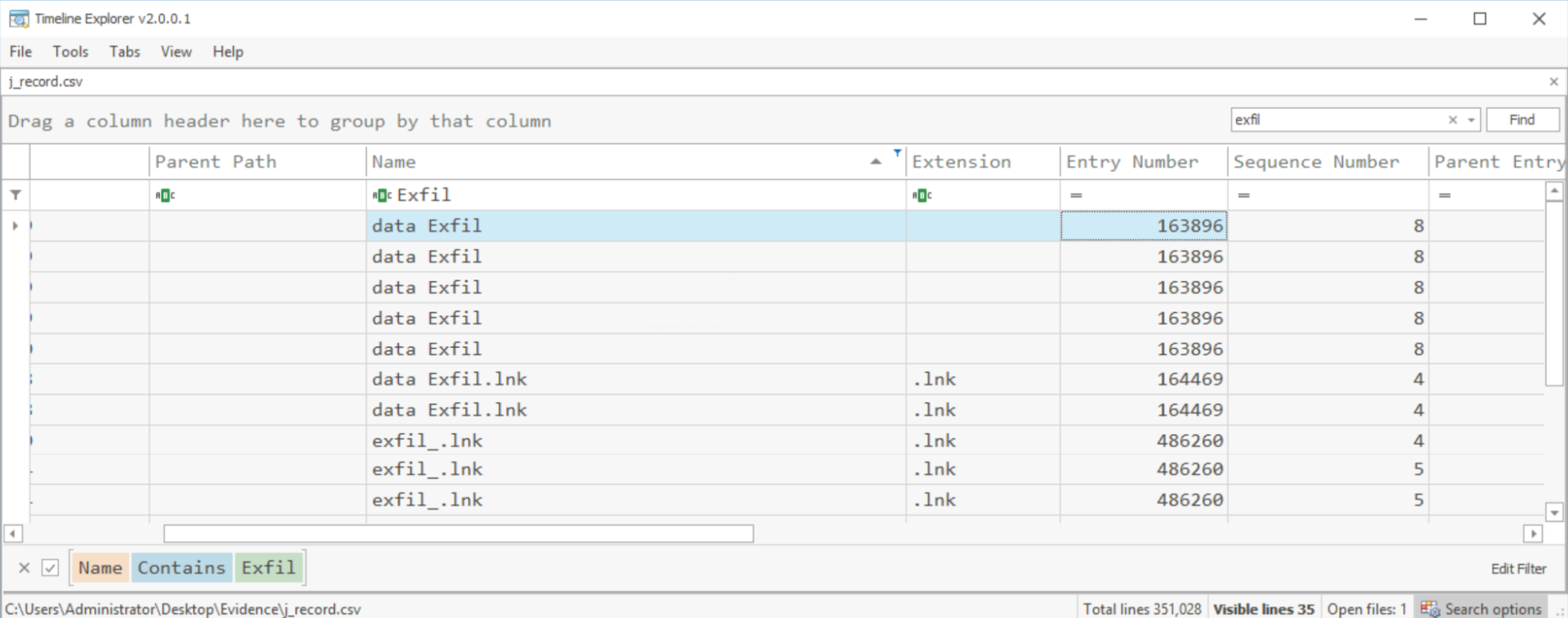
Question: What is the starting offset of the first zip file found after the offset
4E7B00000.In
FTK Imager, select and “Go to” offset4E7B00000. Now we will need to search for the magic numbers associated with ZIP files. These can be found at this reference from Gary Kessler. Search for this pattern:50 4B 03 04. The starting offset of the ZIP file is:Answer:
4E7B0E000
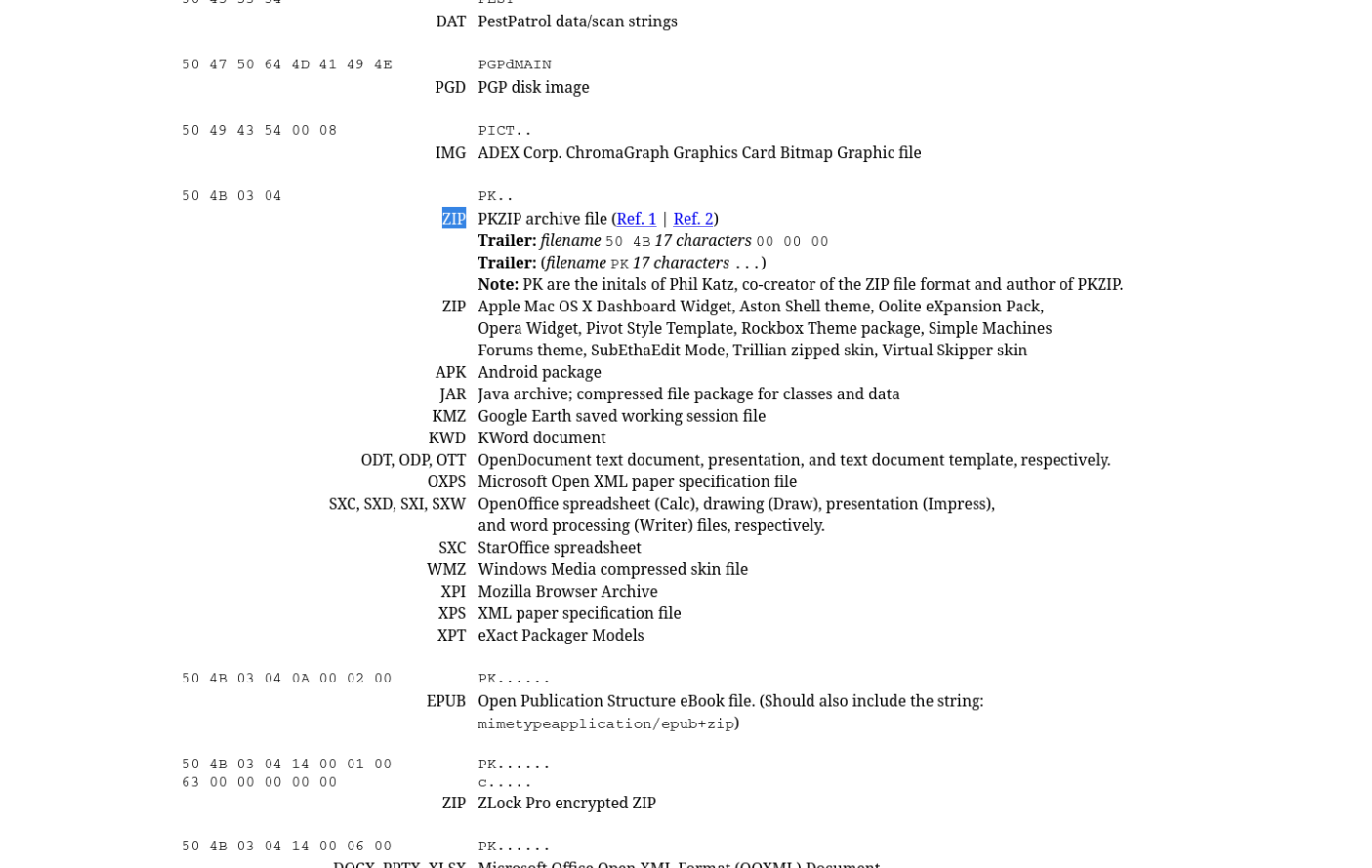
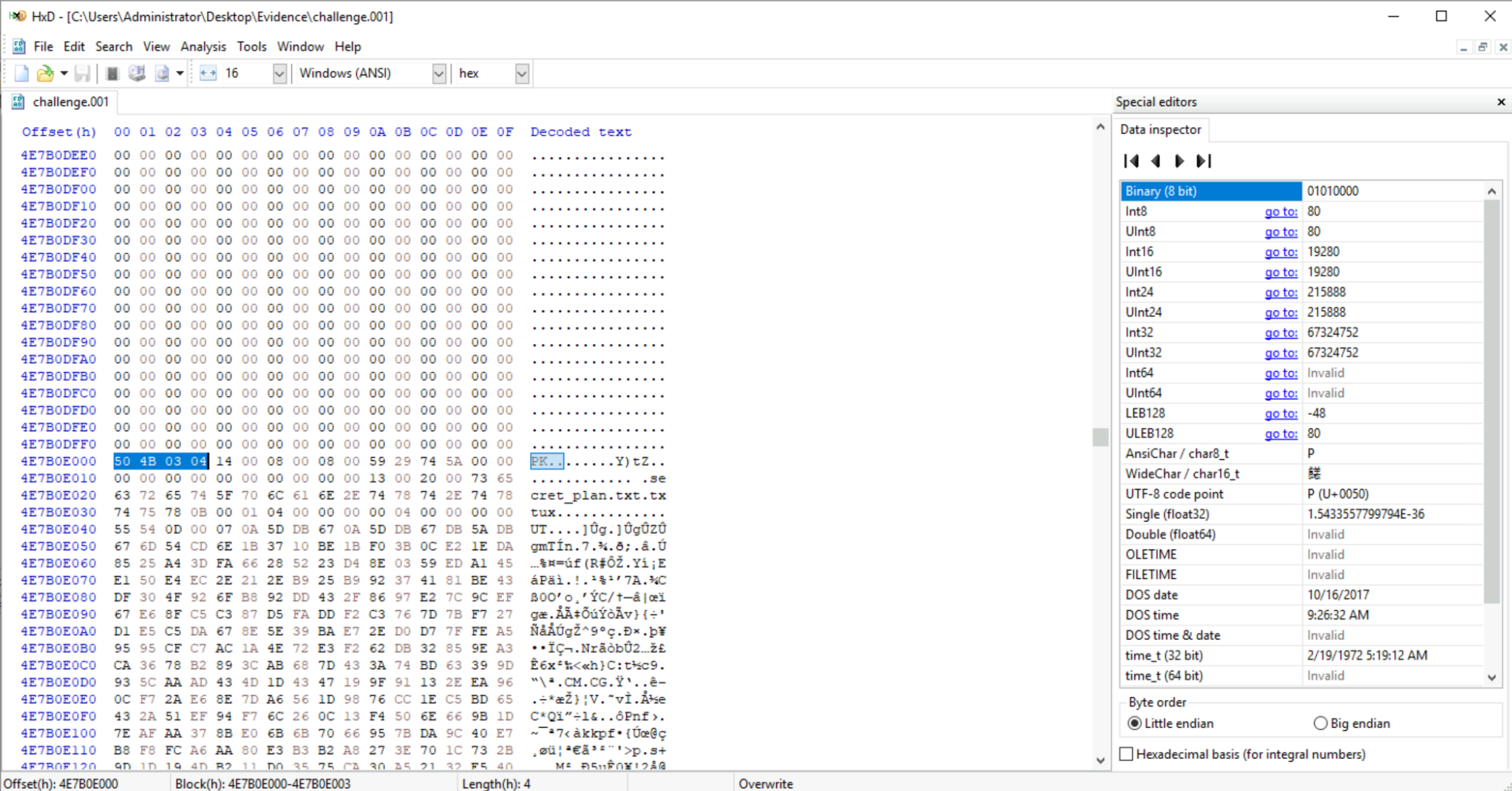
Question: What is the ending offset of the zip file?
From the same reference above, we can search for
50 4B 05 06. The ending offset is 18 bytes from the end:Answer:
4E7B0E43D

Question: What is the flag hidden within the file inside the zip file?
To answer this question, select all bytes from the start to the end of the ZIP file, and copy to CyberChef. Select the option “From Hex”, then save the file. The answer can be found by previewing the ZIP file:
Answer:
FLAG:{RECOVERED_SECRET_THM}
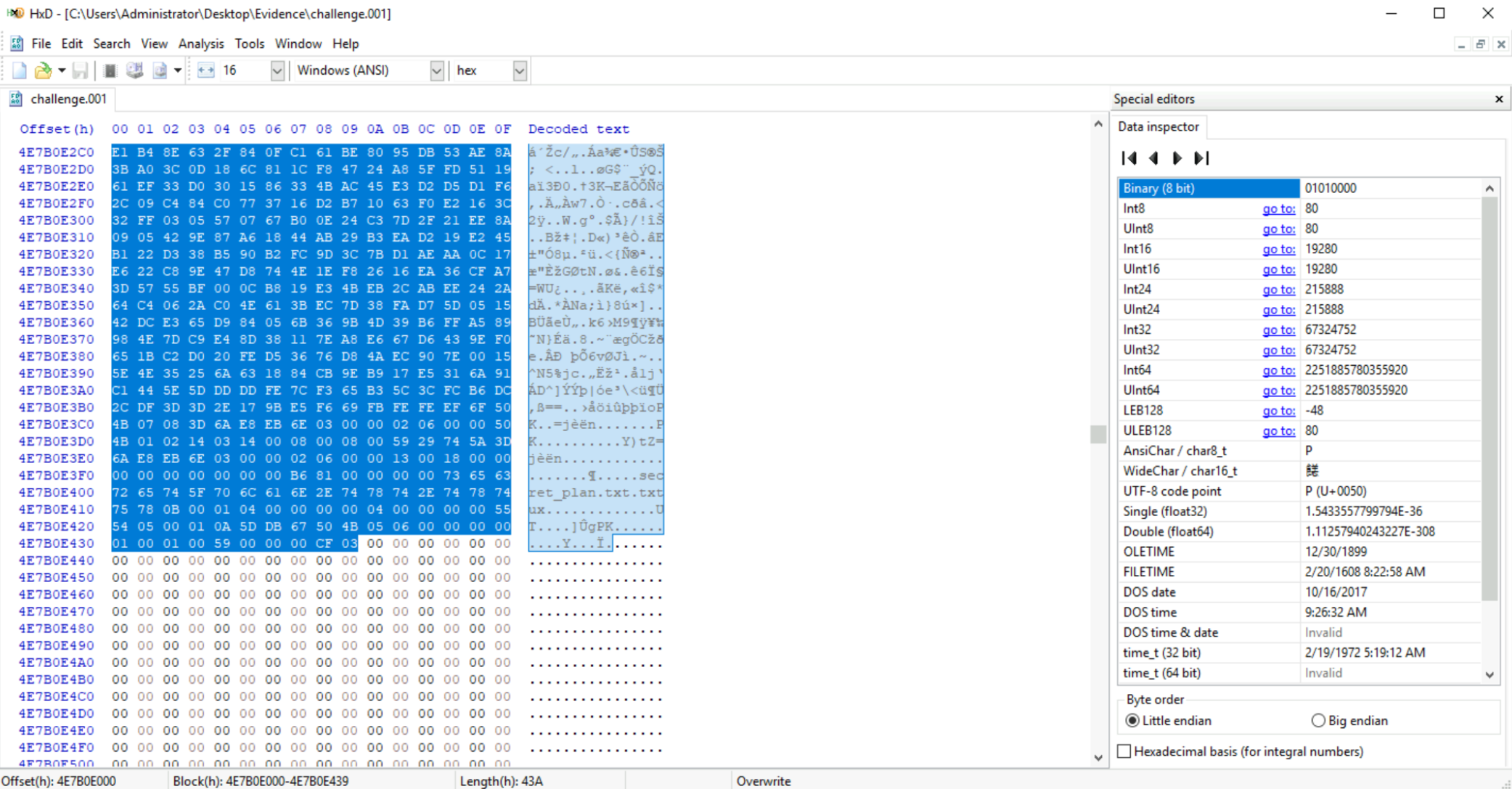
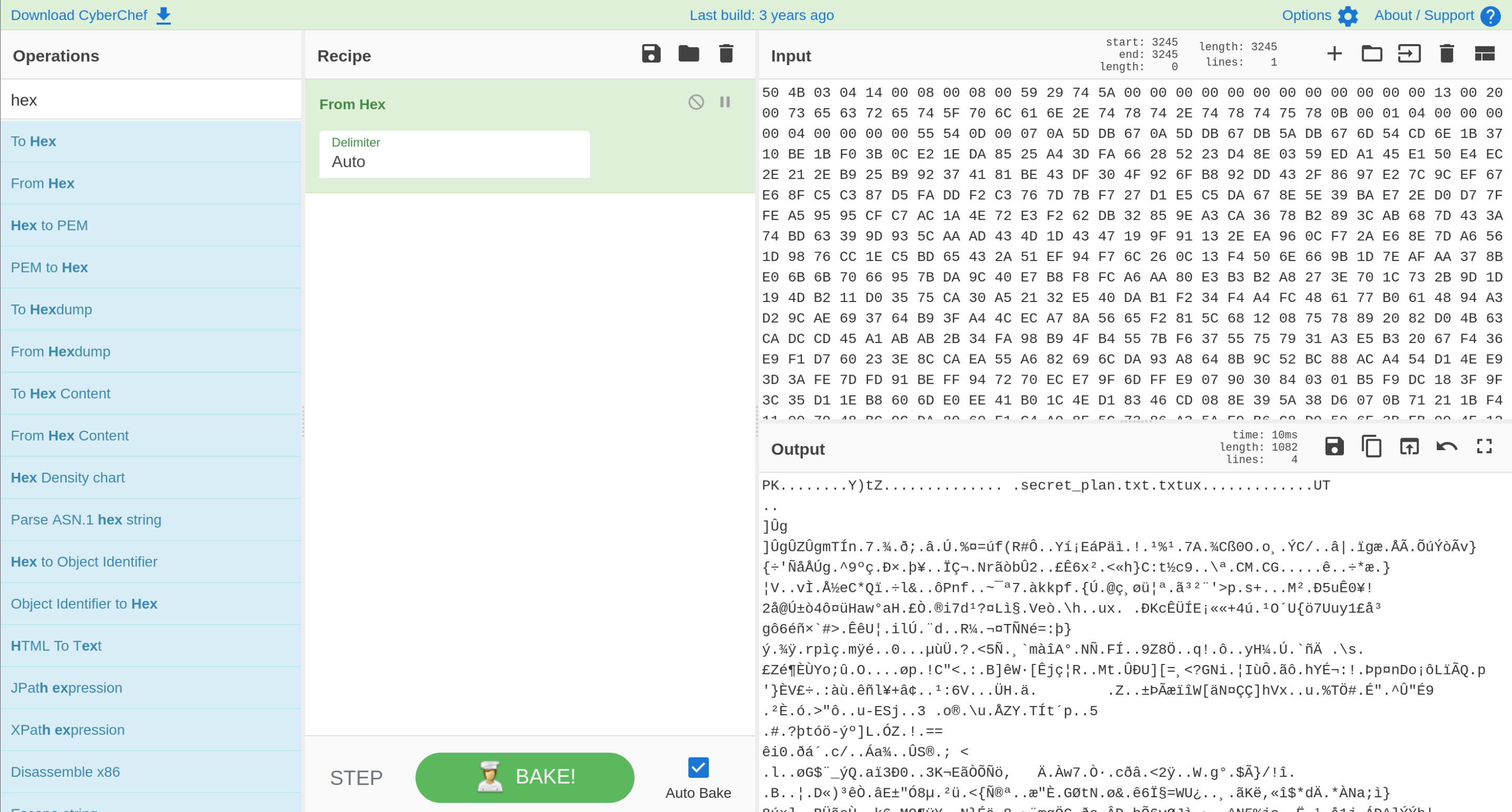
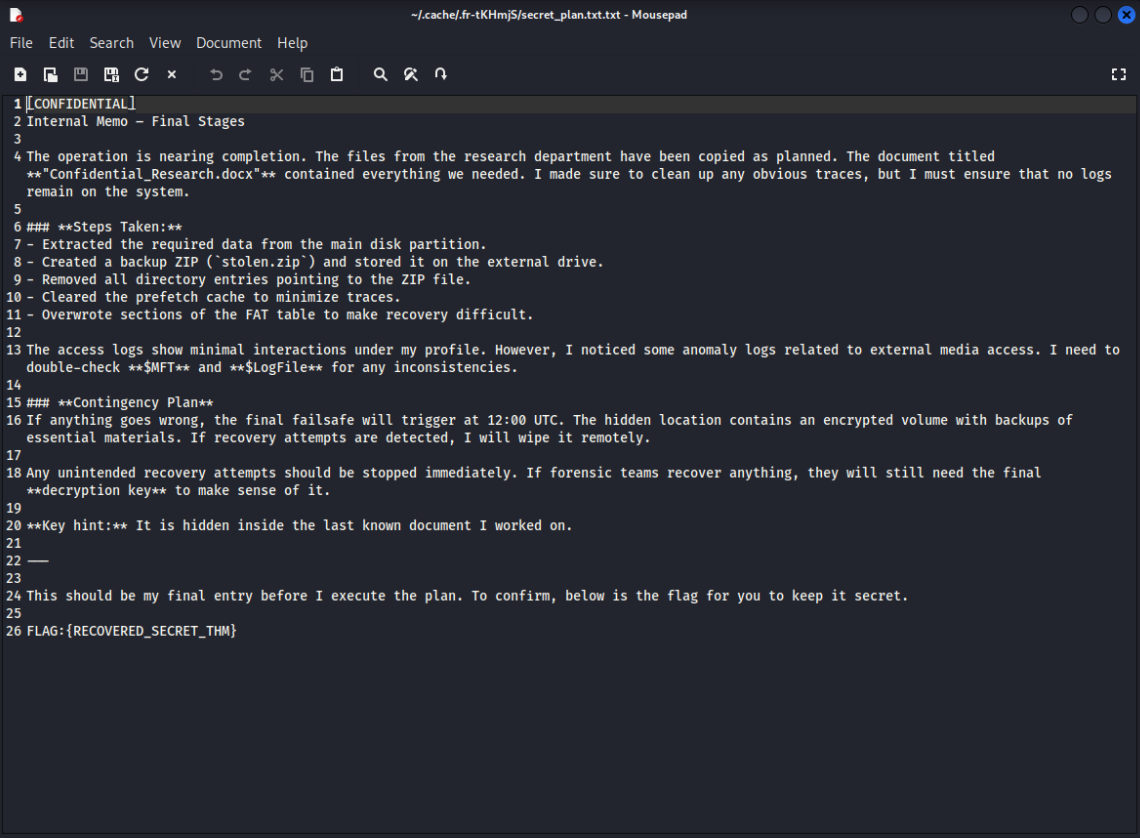
Question: In the FAT32 partition, a tool related to the disk wiping was installed and then deleted. Can you find the name of that executable??
The FAT32 partition is Partition 2. We can open Partition 2 in FTK Imager and review the “File list” of the “[root] directory, where the disk wipe utility is clearly listed:
Answer:
DiskWipe.exe
